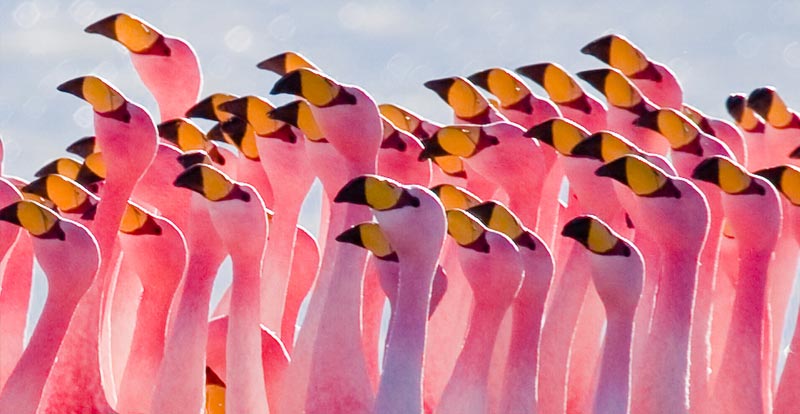We don’t seem to see the word “celebration” much these days.
What could we possibly celebrate? Well … how about the entire planet?
“Planet Earth: A Celebration” arrives at 8 p.m. Aug. 31 on four cable channels, as a sort of end-of-summer bonus. It’s downright joyous, with flamingos (shown here) strutting on parade in the Andes; it’s also nightmarish, as racer snakes pursue baby iguanas. Mostly, it’s a reminder that the British are good – REALLY good – at nature filmmaking.
David Attenborough has been doing that for more than 65 years, while the technical skill around him keep improving. One example here is the use of motion-activated cameras; they let us track a gorgeous creature – the snow leopard, in the Himalayas – that had been mostly invisible to man.
The BBC keeps making beautiful nature series, including two seasons of “Planet Earth,” two of “Blue Planet” and more. Indeed, the BBC America channel will surround “Celebration” Monday with reruns of its gorgeous “Seven Worlds: One Planet”; that makes a nature marathon, from 1 p.m. to 3:30 a.m.
But the centerpiece is “Celebration.” It takes eight segments of “Planet Earth II” and “Blue Planet II” and gives them new narration, plus a new music track by Hans Zimmer and Jacob Shea, performed (sometimes on-camera) by Zimmer, the social-distanced string section of the BBC Concert Orchestra and a British music prodigy simply known as Dave.
That soundtrack has its sleepy moments, but comes alive during the two most memorable sections.
One is sheer fun. In the Andes, almost three miles high, hundreds of pink flamingos parade back and forth. It’s a mating ritual, big and goofy. The sight-and-sound might remind you of the joy of Henry Mancini’s “Baby Elephant Walk” from “Hatari.”
And the other is sheer fear. On a volcanic island, newborn marine iguanas try to reach the sea; snakes – fast, canny, with a coordinated attack – race after them. This isn’t something you’ll want to show the kids – or yourself – before bedtime.
Even in gorgeous settings, killing and chomping are a constant concern. Still, we have to admire the visual beauty of it all.
In the Indian ocean, a giant trevally – the length and weight of a human – can leap high to snag birds. In the Arctic, millions of herring are herded by orca into swirling circles, tighter and tighter. When a humpback whale arrives, it can grab 220 pounds in one mouthful.
And along the South African coast, the octopus is a master of disguise. On the offense, it looks like any rock, until it lunges forward to snag it prey. On the defense, it covers itself with seashells when a shark is passing by.
Maybe that’s the best thing to celebrate here. As bad as things get, we rarely have to worry about a shark, an octopus or a team of racer snakes.
– “Planet Earth: A Celebration,” 8-9:25 p.m. ET (5-6:25 p.m. PT) Monday (Aug. 31) on BBC America and IFC; also, 8-9:25 p.m. ET/PT) on AMC and Sundance
– On BBC America, that’s preceded and followed by reruns of “Seven Worlds: One Planet,” from 1 p.m. to 3:30 a.m. ET (10 a.m. to 12:30 a.m. PT)
